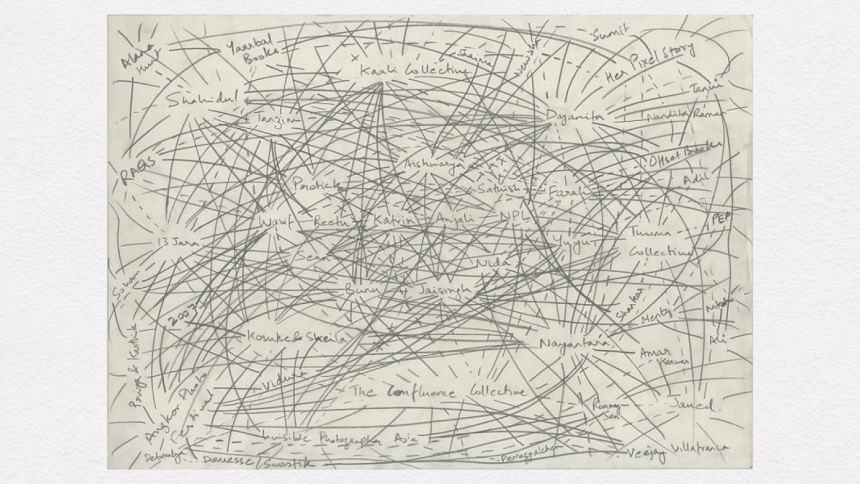Sabih Ahmed and Sohrab Hura discuss shared ecosystems and geographic realignments at Chobi Mela Shunno

The special edition of Chobi Mela features a series of podcasts that include themes ranging from collective narratives to echoes of the 80s, thinking contexts, conversations and many more sharing of ideas in and around defining and (re)defining the meaning and interpretation of images. The podcast series is curated by artiste Munem Wasif who handpicked speakers ranging from artists to curators, filmmakers, writers, musicians and others.
On February 14, Associate Director and Curator of Ishara Art Foundation in Dubai Sabih Ahmed and New Delhi-based photographer Sohrab Hura engaged in a conversation, titled Shared Ecosystems, Geographic Realignments. From his understanding of Sohrab's art practice, Ahmed began with three questions, which he terms as conceptual provocations that he had projected to Sohrab six months back to consider his first curatorial project, Growing Like a Tree. It posed questions like how can an exhibition measure and embody the velocity, circuits and congestions of visual mass circulation in the contemporary moment; how can it enact geographic realignments based on experience and how would Sohrab present visual bonds about networks and journeys, within which he operates.
Sohrab Hura's images are known to explore his position with the world that he exists in, articulated in his concepts of navigating across political geographies – Dhaka, Kathmandu, Delhi, Siem Reap – while building on collective energies and shared experiences. Recalling his relationship with Chobi Mela he mentioned that in 2005, the work Land of a Thousand Struggles was exhibited in the festival. "Shahidul Alam and 2005 are key registers of my starting point. It was important for me then because you do want validations for your work and Shahidul made me a part of the 'we'," Sohrab stated.
They touched base with concepts such as seepage, crossing the borders, reconciliation that help to explore perspectives, unfold connections, and define an exhibition out to the milieu. "Growing Like A Tree lays out an incomplete blueprint of my experience of community and friendship where photography forms the nucleus of this large and pulsating nervous system that entangles our lives together," Sohrab wrote in his essay for the curatorial project.
Ahmed also inquired if differences in thoughts matter. Sohrab in a joking tone said voicing disagreement is what defines his relationship with Munem Wasif. He shared anecdotes of arguments with Wasif around photography, life over apple shakes in a small guesthouse in Cambodia. "We released that a lot of other people had actually stopped eating and listening to us. I believe there is a hunger for this sort of push-pull debate and is expands our spaces."
Sohrab also redirected a query to Ahmed as how curators look at the artworks and the concept of artists as curators. Ahmed explained that the idea of artists as curators is thought stimulating and challenging for his own assumptions of what spaces can be. According to him, each artist has a different mode of producing a milieu through the process of curation as opposed to the grand narrative of bringing together works of art under one roof. The constant churning of ideas and experimentations bring new meaning to the act of curation. "I find there is a different kind of methodology that gets introduced to curating with every artistic work," Ahmed adds.
The conversation took its own twists and turns, expanding from how the show can travel to different places and become a new kind of a tree in an approach of Sohrab's practice of book-making to looking at shifts in lens-based practice in the last decade and disruption of context around the images. For the circulation of images, they discussed shift in meaning of images from one agenda to having multiple layers of meaning. They discussed technologies like Deepfake images in the act of bringing disruption in the context in images and representation. According to the artiste, photography is not a solitary practice but a collective one with people. He believes artistes can foresee the future but also adds a cautionary note to look deep into the system and be aware of the shifting grounds beneath them.

 For all latest news, follow The Daily Star's Google News channel.
For all latest news, follow The Daily Star's Google News channel. 



Comments